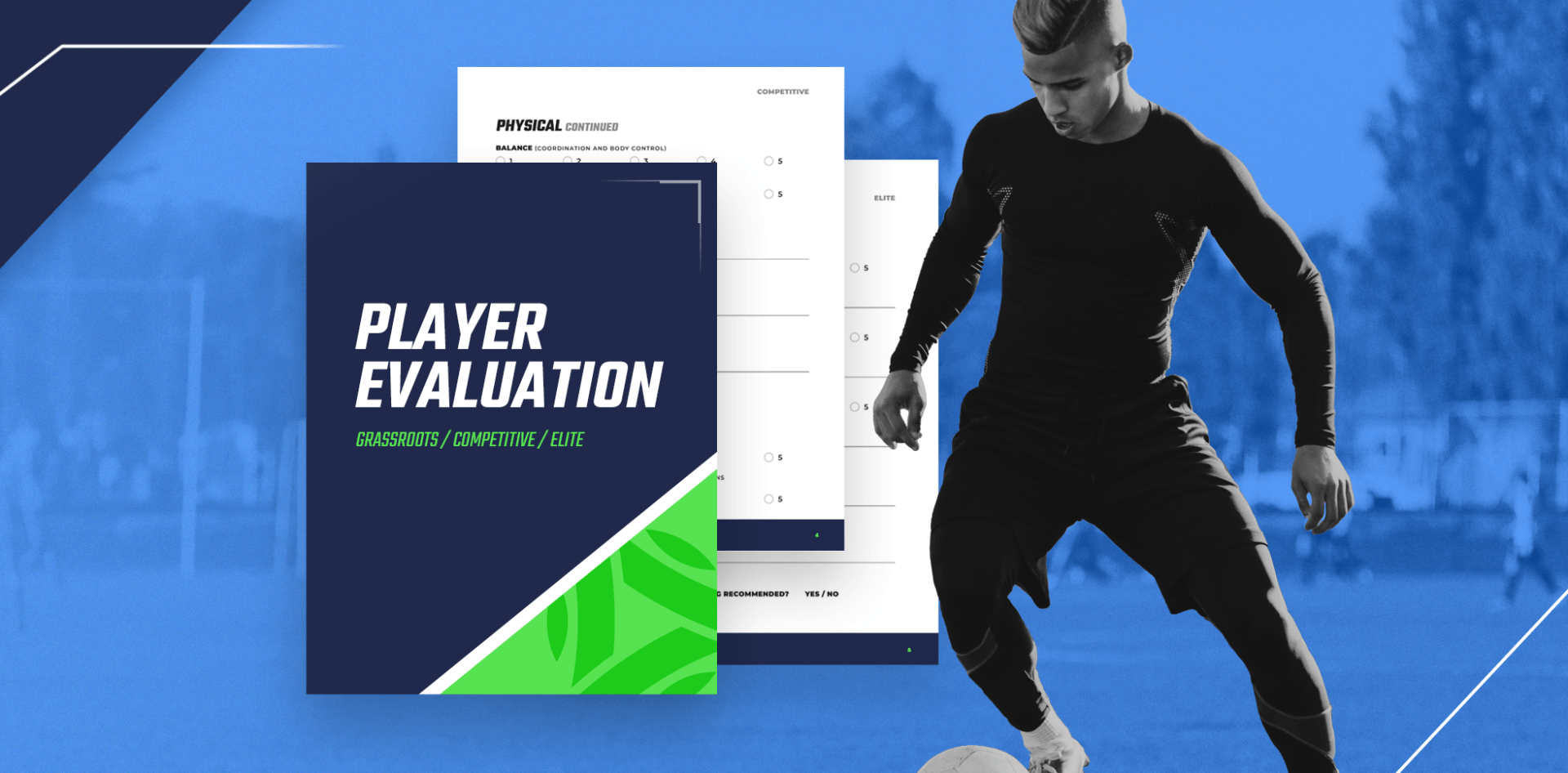

Editor’s Note: In our recently published research report, The State of Youth Sports Clubs & Parent Expectations, we learned that 43% of parents are not fully satisfied with their current club experience. Of particular interest, we found that parents are more dissatisfied with the player evaluation process than any other element of the club experience. We learned that 1 out of every 2 parents who use an app to access player evaluation forms are very satisfied with their club’s evaluations. And, today, only 20% of parents report using an app or software to access evaluations. We also learned that when a club shares player evaluations through an app or third party software (as opposed to manually on paper or through email), parents are more than twice as likely to be very satisfied with their overall club experience.
If you always wanted to know how other youth soccer clubs use player evaluation forms, you’re in the right place. (As a bonus, we’ve included three free soccer player evaluation form templates for download.)
Q: Who knew an evaluation form template could be such a precarious topic in youth sports?
A: Everyone in youth sports.
"There are so many different opinions out there around player evaluation forms and processes that I don't think any club believes they do it the best way," says Michael Bamber, seasoned soccer coach and PlayMetrics account manager.
"I've honestly never spoken to a club that believes they've got it just right."
On top of this uncertainty, coaches with already full plates are tasked with completing dozens of soccer player evaluation forms in a short turnaround time.
"Most coaches have full-time jobs and coach on the side because they love to do it," said Adam Hayes, who served as executive director at FC Boulder, now Boulder County United, and is now with PlayMetrics. "They're already stretched thin, so when evaluations come around, clubs need to provide an evaluation form template that's easy to use, or they're going to start the evaluations process already behind."
Thanks to PlayMetrics form builder features, our team was able to explore over 240 player evaluation forms designed by 66 different youth soccer clubs of all shapes and sizes. Now you can get a rare look into key learnings and growing trends in youth soccer player evaluations.
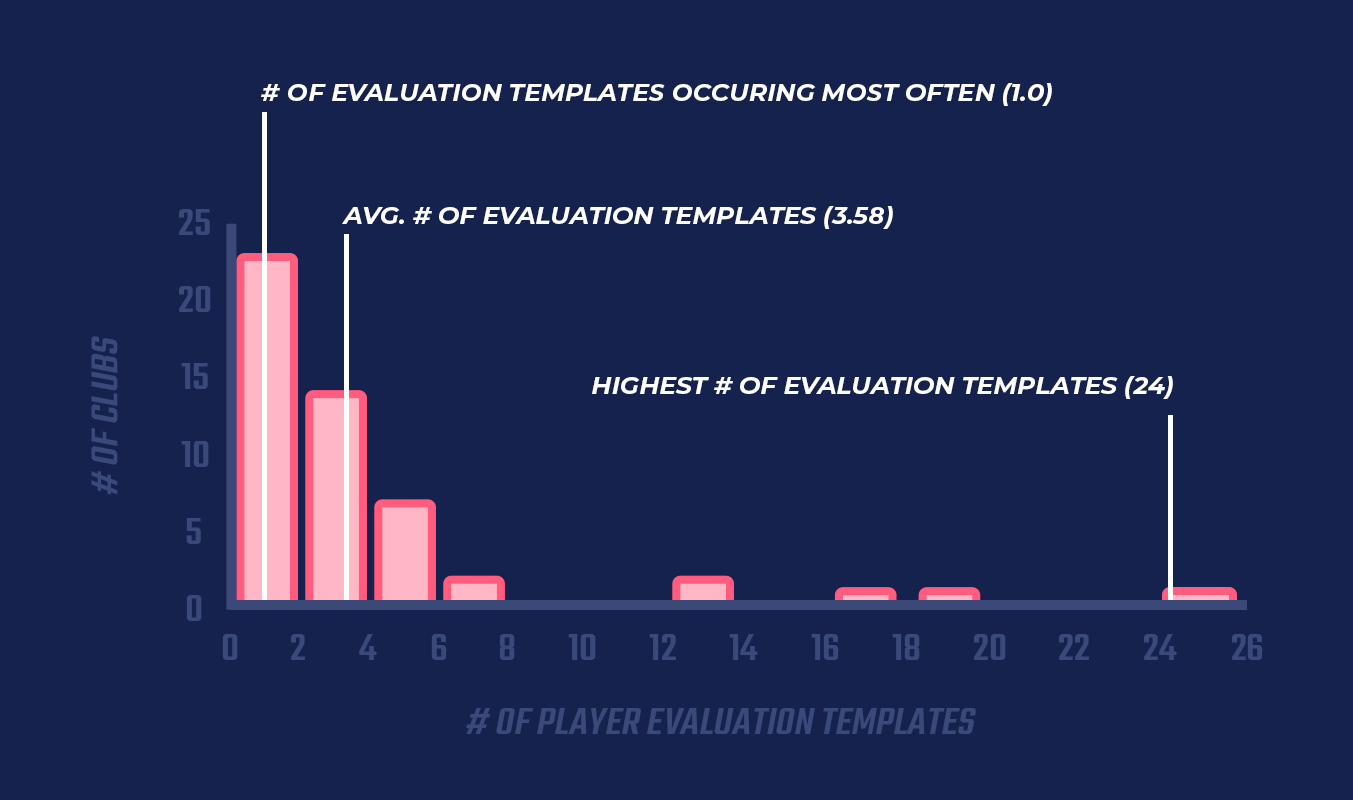
In PlayMetrics, a “template” is a pre-formatted file that serves as a starting point for clubs to create and distribute player evaluation forms.
Spoiler alert: There is no "right" way to construct a soccer player evaluation form. But there certainly are best practices that every club leader should keep top of mind in an evaluation form template.
Laying a Form Foundation
Some of the most important decisions you'll make that will impact the effectiveness of your evaluation form template happen before it gets into the hands of a coach or player. There should be an intentional strategy behind the way you structure each part of a player evaluation form to ensure your players and coaches are aligned, and able to use the results to chart a clear path to success.
Before writing your soccer player evaluation form, it's necessary to organize and address these key fundamental questions:
What types of soccer player evaluations do you need?
One evaluation form template does not fit all. Our research found that nearly half of all clubs use more than one generic template for player evaluations. Examples of common player evaluation forms include:
- Grassroots or Basic Soccer Player Evaluation Form - Best suited for volunteer coaches and recreation leagues where the focus is on learning primary technical skills and basic game tactics.
- Competitive or Intermediate Soccer Player Evaluation Form - Best suited for mid-level players where the focus is on more strategic player development and mastery of skills to transition to the next stage of play.
- Elite or Advanced Level Soccer Player Evaluation Form - Best suited for higher-level players - Academy, ECNL, etc., where the focus is on elevating skills for travel, regional, etc.
And that’s just the beginning. Seventy-one percent of clubs with more than one form template customize their player evaluations even further. Creating forms specific to different age groups and playing levels (such as Recreational vs. Academy) are most common:
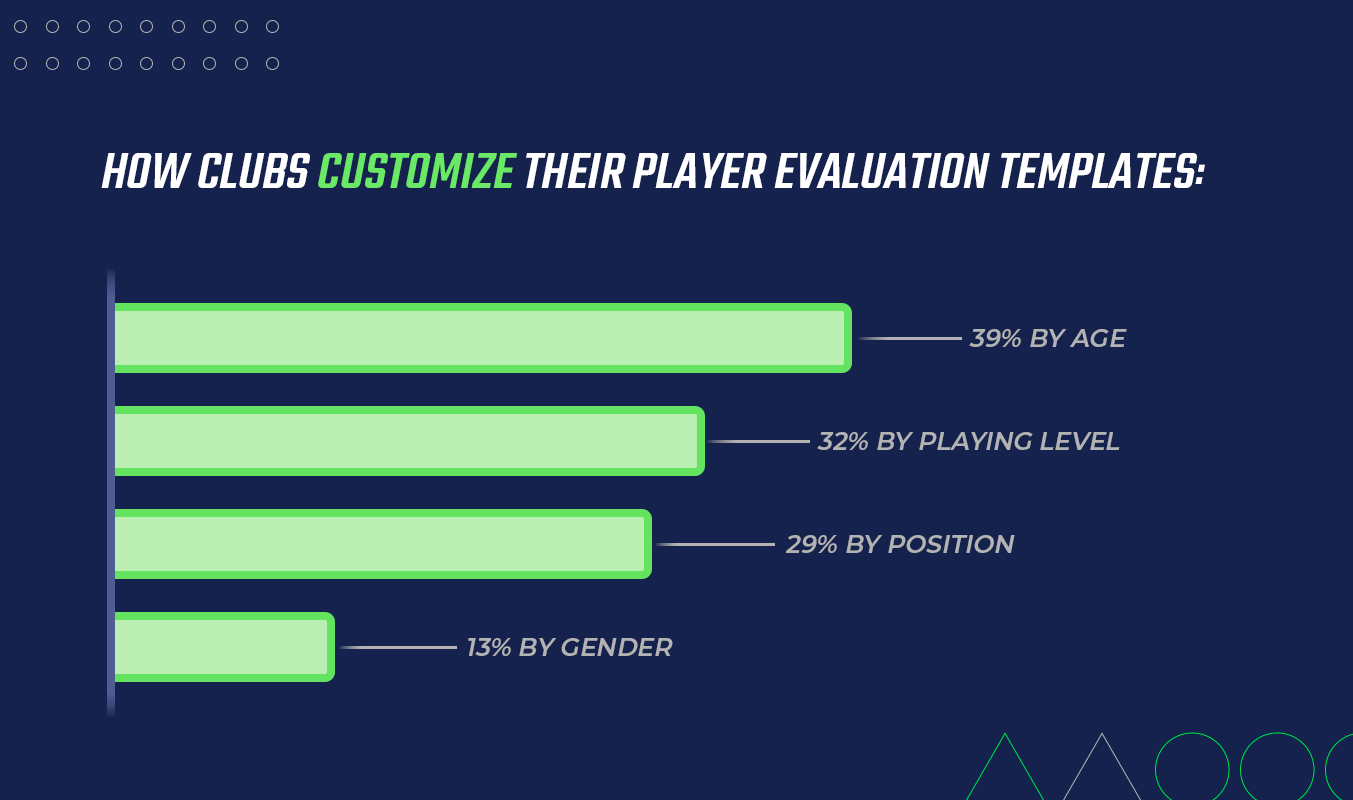
When will you do player evaluations?
The timeline for when evaluations happen impacts what you include on your forms and the communication plan between directors, coaches, players, and families. For example, if you’re evaluating monthly, will you require the same level of detail as you would on a quarterly basis? And, if you evaluate pre-season and again mid-season, your forms will likely be standardized to ensure comparisons and measurements of progress are clear.
While the majority of clubs we analyzed mainly offer post-season player evaluations, we noticed a few alternative strategies:
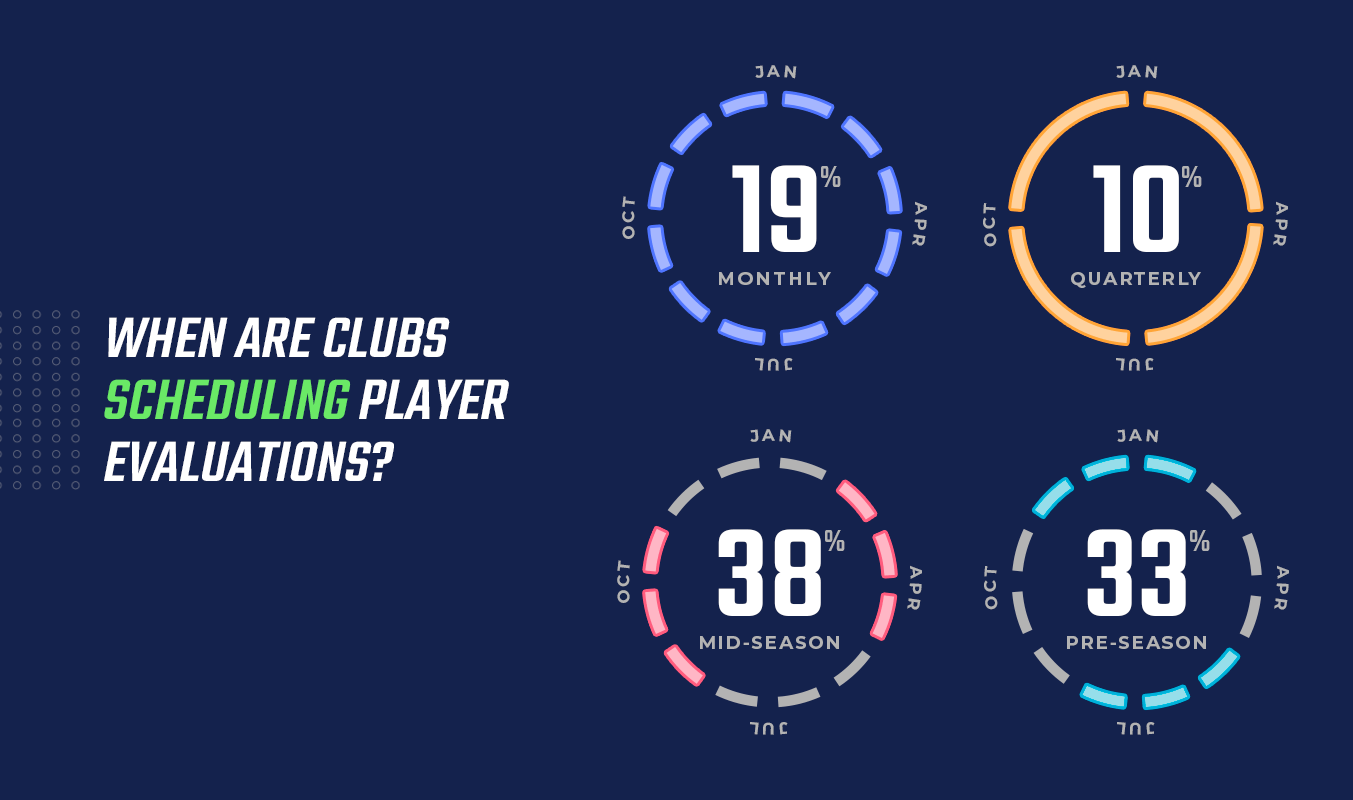
Who is evaluating?
Will your evaluation process be done by coaches exclusively, or will your template need to account for a player’s self-evaluation as well? More than a quarter of the clubs in our sample set had distinct forms integrating both coach and player feedback.

Building Your Player Evaluation Forms
Based on our research, there are clear similarities and distinctions among soccer player evaluation forms—from the number of questions to the scale of measurement—that can help drive the best approach for your club. These patterns are particularly apparent when comparing basic evaluations with more advanced forms.
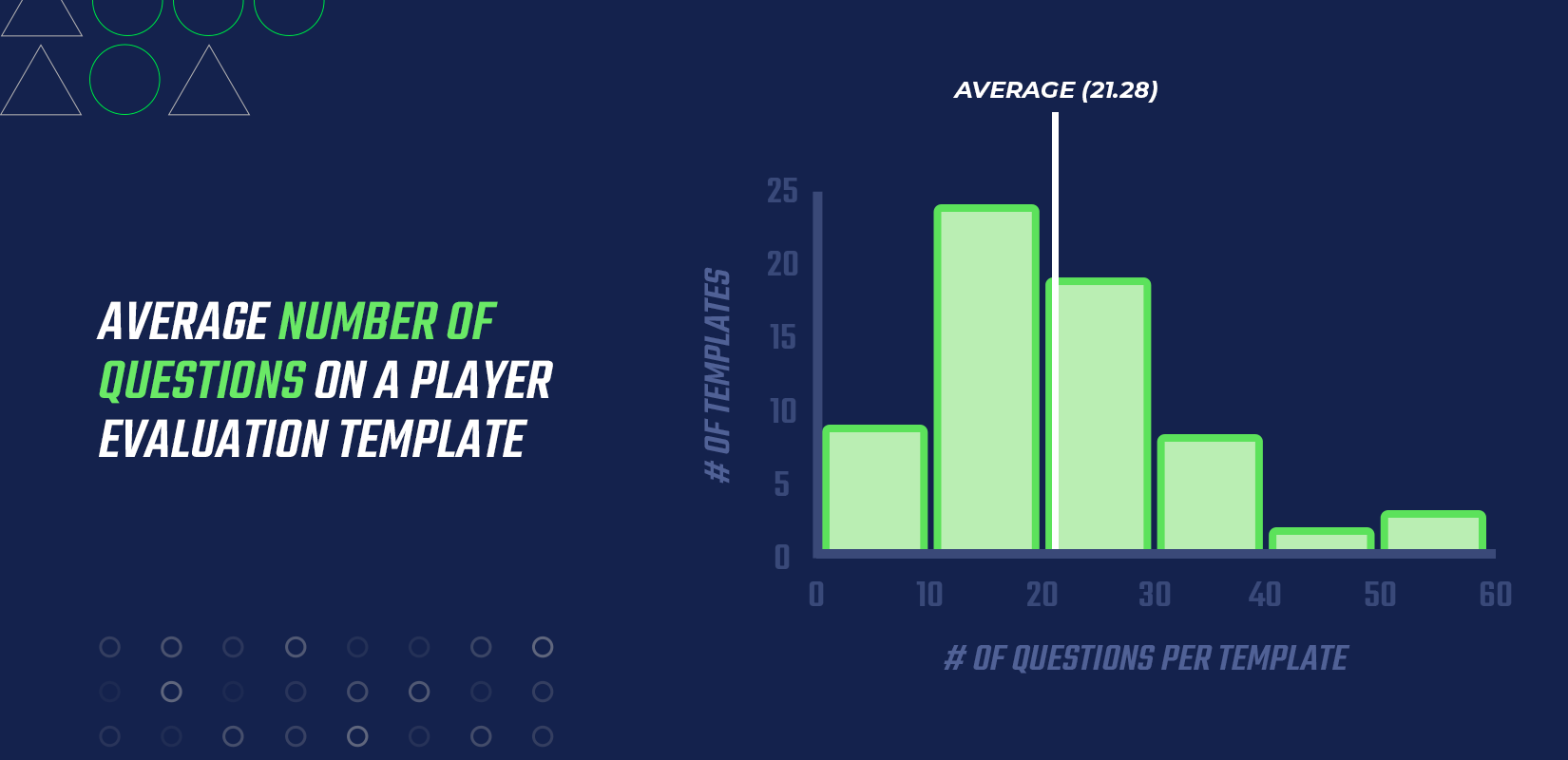
The majority of player evaluations consist of 10–30 questions with the average number right around 21. Those rare 50- and 60-question forms tend to belong to very large clubs and are primarily used for advanced teams and players.
Form Template Categories
Most player evaluation form templates we reviewed are organized into sections and by the following categories:
- Technical - Evaluates the player's technique and skill mastery.
- Tactical - Evaluates the player's understanding of the principles of the game both individually and as part of a team.
- Physical - Evaluates the player's physical abilities that impact his or her soccer performance.
- Psychological (Social/Emotional) -
This category name varied the most on the forms we studied. It could also be found labeled as "Mental," but often included the "Social/Emotional" subtag. This important section evaluates a player's mental and emotional capacities as it pertains to successful growth and performance.
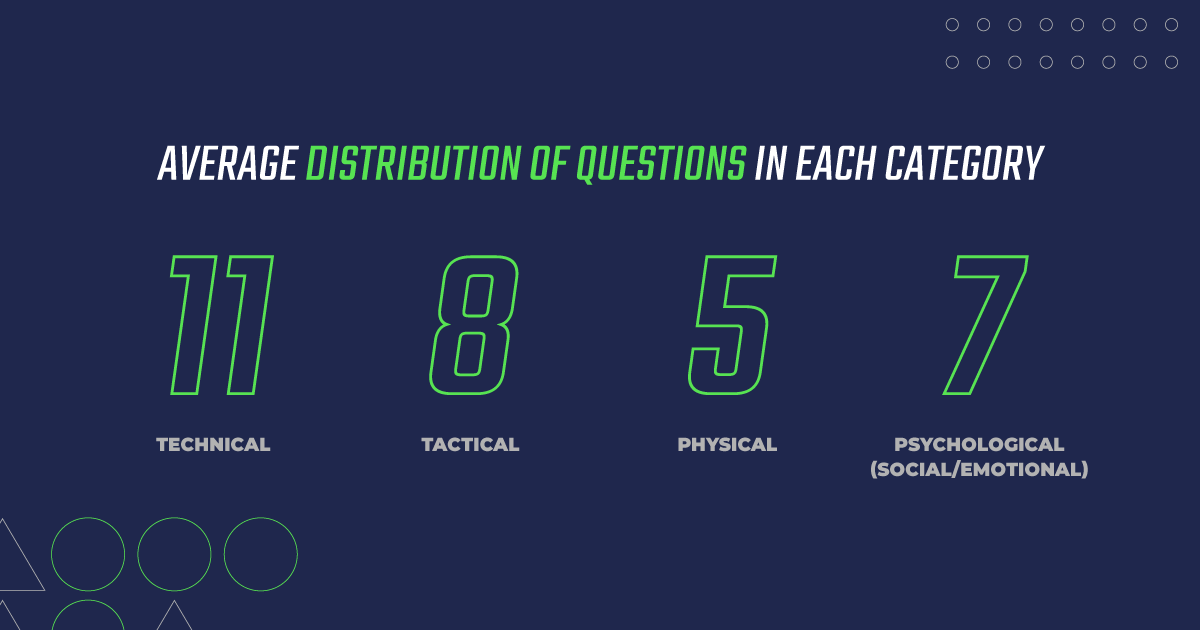
Evaluation Criteria
Across our sample set, the majority of soccer player evaluation form templates relied on the numbered scale (1 to 5...more on that below), with an open-ended comment box at the very end. A few outliers, mostly in the more advanced levels, included the scale with dedicated space or text boxes for coaches to enter more detailed feedback within each category. These open-ended fields provide a variety of prompts, including:
- Areas for improvement
- Growth Opportunity #1 / #2
- Areas of Strength
- Action Plan
- Player's best [category] ability is...
- [Category] the requires the most improvement is...
- Is supplemental training recommended to improve [category] skills?
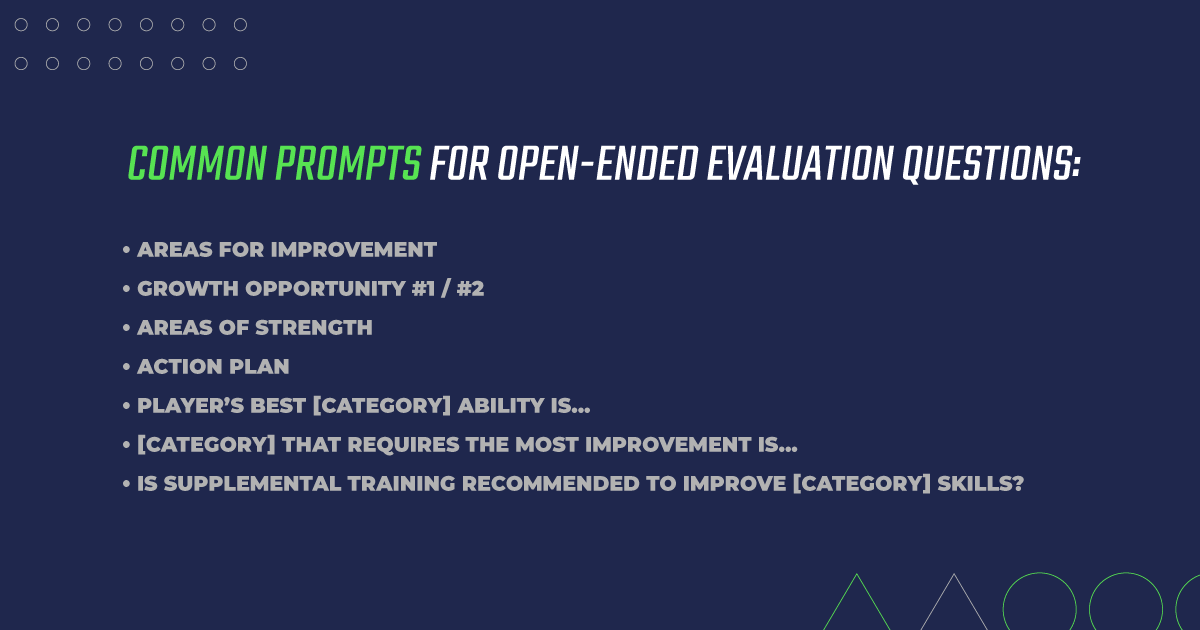
The Rating Scale
The 1 to 5 scale takes the top spot for most commonly used, which is on par with evaluation scale data in other industries. Where things really start to vary is in the definitions behind the numbers. For example, "opportunity for improvement," and "does not meet expectations" at the lower end of the scale, all the way to "above team standard," and "exceptional" at the higher end.
A surprising number of forms did not include an explanation of the rating scale which could lead to discrepancies as coaches can interpret the questions and criteria in different ways.
A Parting Thought on All Things Being Equal
Many youth sports clubs struggle when standardizing player evaluation forms. This is especially challenging when there are families with children on different teams.
"Clubs want everyone to receive the same player evaluation," says Bamber. "If you have two daughters and one gets a thoughtful, professional evaluation, it is good for the player, but also reflects well on the coach and club overall. However, when the other daughter in the same club, at the same level but on a different team, gets a sloppy evaluation from a coach written on a napkin, that's going to cause an unnecessary problem."
Get Your Free Soccer Player Evaluation Form Templates
Looking for soccer player evaluation form templates that get the job done and look professional? Download the free forms below for player evaluations specifically designed for youth soccer clubs. The pack contains an evaluation form template for three different levels of players that you can use as is or as inspiration to think through and customize your own player evaluation forms.
Learn more about designing, distributing, and tracking all of your club's forms (and other important documents) within PlayMetrics.
Get the Form Templates
Recent Posts

PLATFORM
COMPANY
© 2017–2024 PlayMetrics, LLC. All rights reserved.



